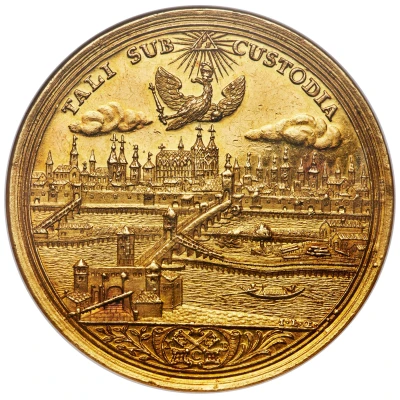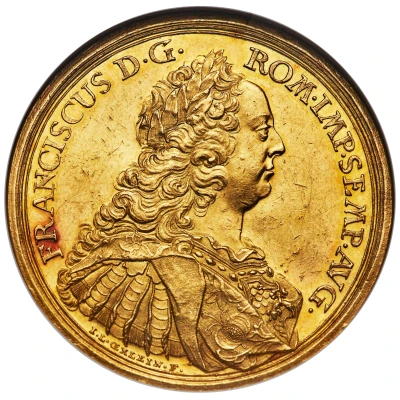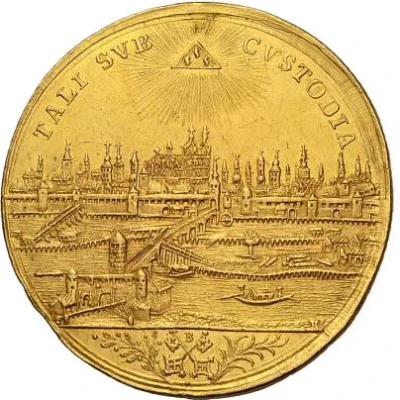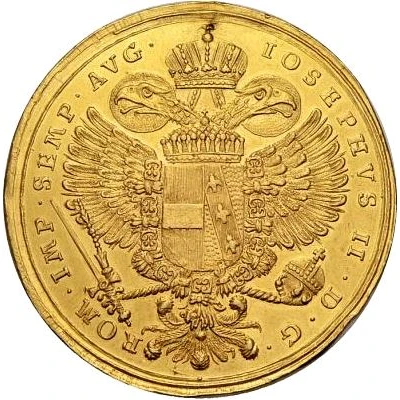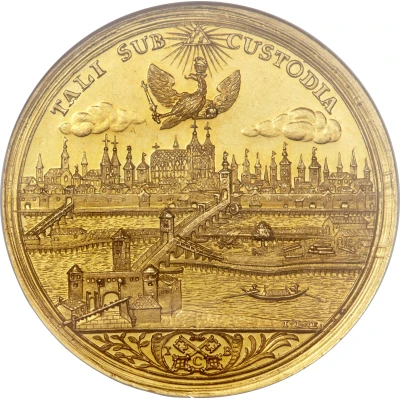
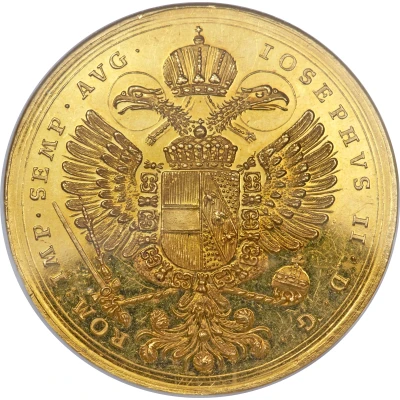

© Heritage Auctions
8 Ducats ND
| Gold (.986) | 28 g | - |
| Issuer | Free city of Regensburg (German States) |
|---|---|
| Period | Free city (1245-1803) |
| Emperor | Joseph II (1765-1790) |
| Type | Standard circulation coin |
| Years | 1765-1790 |
| Value | 8 Ducats |
| Currency | Thaler |
| Composition | Gold (.986) |
| Weight | 28 g |
| Shape | Round |
| Demonetized | Yes |
| Updated | 2024-10-05 |
| Numista | N#86999 |
|---|---|
| Rarity index | 97% |
Reverse
Crowned, double-headed eagle holding sword and globus cruciger, crowned shield and order at breast
Script: Latin
Lettering: IOSEPHVS II . D . G . ROM . IMP . SEMP . AVG .
Engraver: Johann Leonhard Oexlein
Interesting fact
The 8 Ducats coin from the Free City of Regensburg (German States) is interesting because it was minted during a time of great economic and political change in Europe. The coin was issued during the period of the Holy Roman Empire, which was a loose confederation of German states that existed from the 10th to the 19th century. The Regensburg mint was one of the most important mints in the empire, and it produced a wide range of coins, including the 8 Ducats coin, which was a standard circulation coin at the time. The coin is made of gold (.986) and weighs 28 grams, making it a substantial and valuable coin. The design of the coin features an image of the Virgin Mary on one side and the coat of arms of Regensburg on the other. The coin's value was based on the gold standard, which was widely used in Europe during this period. The 8 Ducats coin from Regensburg is a rare and valuable collector's item today, and it is highly sought after by numismatists and collectors of historical coins. Its value is not only monetary but also historical and cultural, as it provides a glimpse into the economic and political landscape of Europe during a time of great change and upheaval.
